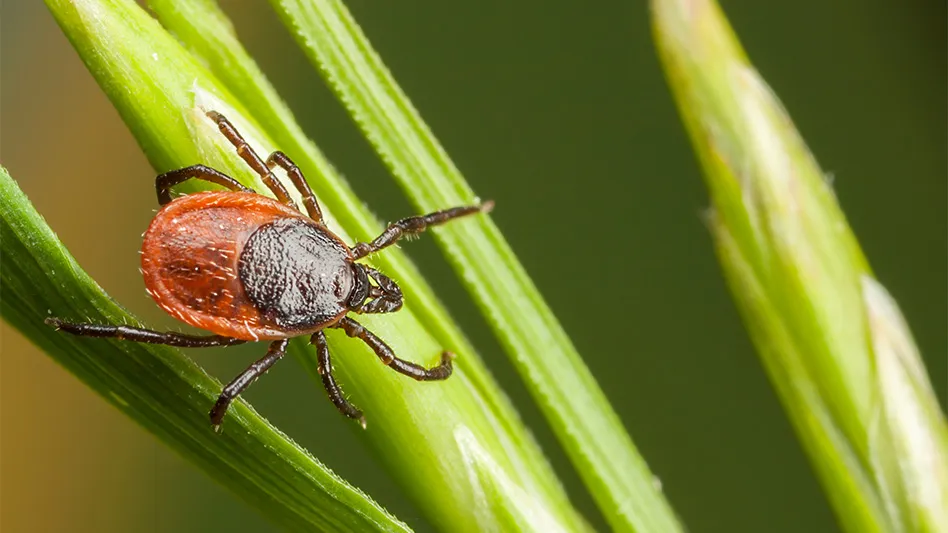
iStock | Risto
TORONTO – May is Lyme Disease Awareness Month, and Abell Pest Control shared the importance of understanding and preventing this common tick-borne illness. Abell is committed to increasing knowledge about Lyme disease and encouraging individuals to protect themselves against tick bites, the company said.
"Year after year, we're witnessing a concerning uptick in tick inquiries here at Abell," said Aaron Soudant, Director of Service Excellence, Quality Assurance, Abell Pest Control. “Over the past 5 years, Abell has experienced a 500% increase in tick-related inquiries – a clear signal that we all need to take extra precautions, especially in parks and wooded areas, to protect ourselves from ticks and reduce the threat of Lyme disease transmission."
Climate change is having a significant impact on the spread of tick populations in Canada, increasing the risk of infection in previously unaffected regions, the company said. This is a cause for concern, as cases of Lyme disease are on the rise.
With more ticks and tick bites occurring in Canada each year, better diagnosis of Lyme disease and research is the goal of the G. Magnotta Foundation for Vector-Borne Diseases at the University of Guelph. Abell's support for this research further emphasizes the importance of collaborative efforts to address the challenges posed by Lyme disease, the company said.
“The best prognosis for Lyme disease is achieved when it is diagnosed and treated early, but many people don’t recall a tick bite and may be unaware of their risk. Prevention is the best strategy to avoid Lyme disease and its potentially serious complications, including those affecting the heart and nervous system, said ” Dr. Melanie Wills, Director, G. Magnotta Lyme Disease Research Lab, University of Guelph.
Early symptoms of Lyme disease can appear within a few days or up to a month after a bite from an infected tick. Symptoms may include fever or chills, headache, muscle or joint pain, fatigue, stiff neck, and swollen lymph nodes.
In addition, 70 to 80 percent of infected individuals experience an expanding red rash that often looks like a bull’s-eye target. If left untreated, Lyme disease can lead to more severe symptoms, including neurological issues such as facial palsy, shooting pains, and inflammation of the brain and spinal cord. Early detection and treatment are crucial to preventing these complications and promoting full recovery.
Latest from Pest Control Technology
- Orkin Helps Local Youth Sports Program Design a ‘Killah’ New Logo
- ABC Home & Commercial Services Celebrates 75 Years in Business
- NPMA Academy Announces Full Schedule
- Truly Nolen Promotes Marchello, Christopherson and Bolton to Managerial Positions
- TruGreen Announces 2024 List of Top 20 U.S. Buggiest Cities
- Why PMPs Use Rodent Bait Stations
- NPMA’s Women’s Forum Encouraged Female Leadership, Growth Opportunities in Pest Control
- GoPest Expands to Birmingham and Huntsville (Ala.)





